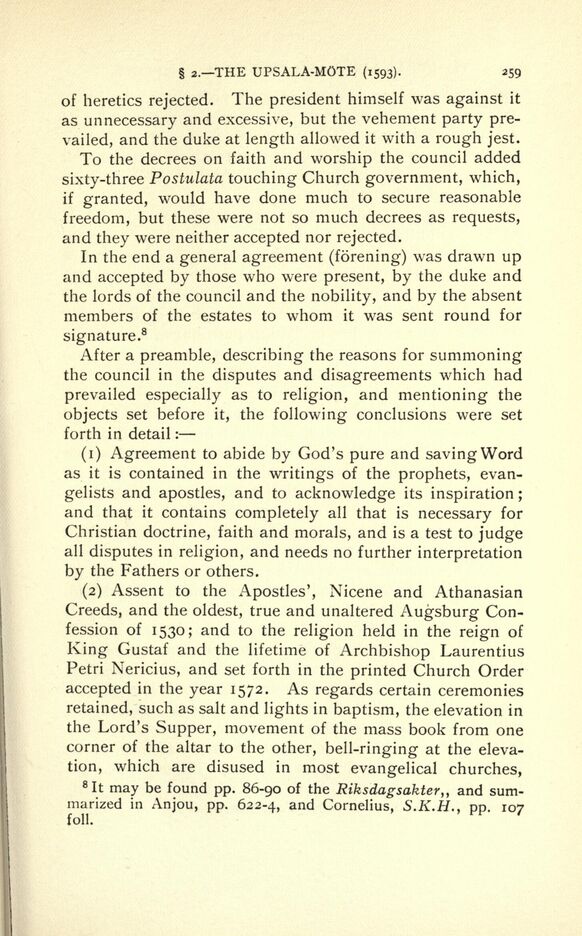
Full resolution (JPEG) - On this page / på denna sida - VI. From the Upsala-möte to the death of Charles XII. The Great Kings and the Great Bishops (1592—1718 A.D.)

<< prev. page << föreg. sida << >> nästa sida >> next page >>
Below is the raw OCR text
from the above scanned image.
Do you see an error? Proofread the page now!
Här nedan syns maskintolkade texten från faksimilbilden ovan.
Ser du något fel? Korrekturläs sidan nu!
This page has never been proofread. / Denna sida har aldrig korrekturlästs.
2. THE UPSALA-MOTE (1593). 259
of heretics rejected. The president himself was against it
as unnecessary and excessive, but the vehement party pre
vailed, and the duke at length allowed it with a rough jest.
To the decrees on faith and worship the council added
sixty-three Postulata touching Church government, which,
if granted, would have done much to secure reasonable
freedom, but these were not so much decrees as requests,
and they were neither accepted nor rejected.
In the end a general agreement (forening) was drawn up
and accepted by those who were present, by the duke and
the lords of the council and the nobility, and by the absent
members of the estates to whom it was sent round for
signature.
8
After a preamble, describing the reasons for summoning
the council in the disputes and disagreements which had
prevailed especially as to religion, and mentioning the
objects set before it, the following conclusions were set
forth in detail :
(1) Agreement to abide by God s pure and saving Word
as it is contained in the writings of the prophets, evan
gelists and apostles, and to acknowledge its inspiration;
and that it contains completely all that is necessary for
Christian doctrine, faith and morals, and is a test to judge
all disputes in religion, and needs no further interpretation
by the Fathers or others.
(2) Assent to the Apostles , Nicene and Athanasian
Creeds, and the oldest, true and unaltered Augsburg Con
fession of 1530; and to the religion held in the reign of
King Gustaf and the lifetime of Archbishop Laurentitis
Petri Nericius, and set forth in the printed Church Order
accepted in the year 1572. As regards certain ceremonies
retained, such as salt and lights in baptism, the elevation in
the Lord s Supper, movement of the mass book from one
corner of the altar to the other, bell-ringing at the eleva
tion, which are disused in most evangelical churches,
8
It may be found pp. 86-90 of the Riksdagsakter,, and sum
marized in Anjou, pp. 622-4, and Cornelius, S.K.H., pp. 107
foil.
<< prev. page << föreg. sida << >> nästa sida >> next page >>